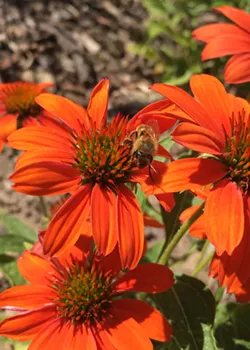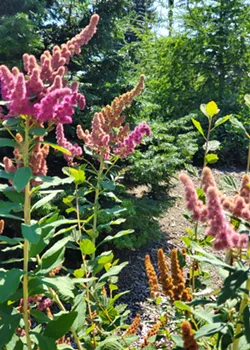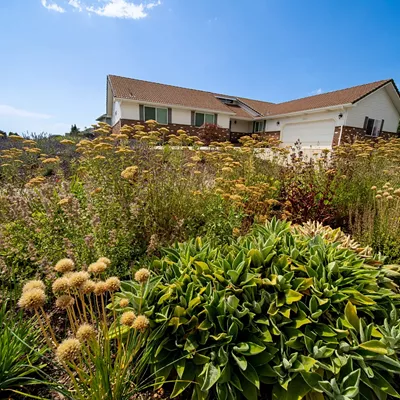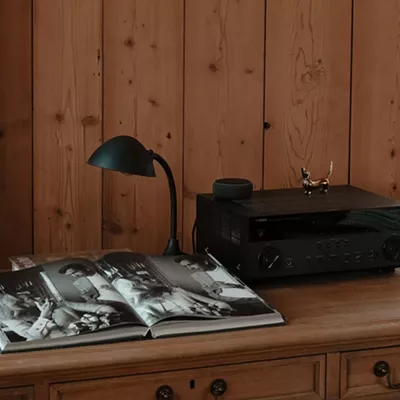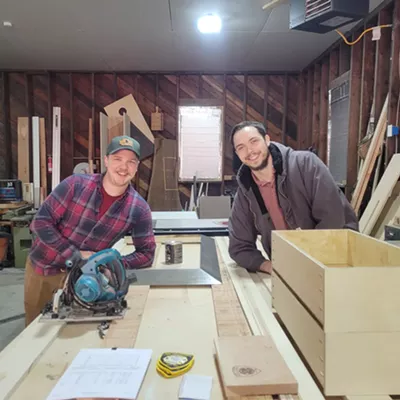
Ahouse perched on a swath of green grass with cute little green balls of shrubbery may represent "home" in emoji-world, but landscape design has moved well beyond that childlike impression.
For homeowners, grappling with yards beyond that stereotype requires a series of decisions reflecting potentially competing goals. What uses should the outdoor area accommodate? Which plants will be suitable? How expansive will the grass lawn be — or will there even be any grass? Will water features make the cut? The list goes on. For Anne Hanenburg, principal landscape architect at SPVV in Spokane, there's an obvious place to start.
"One of our first questions is, 'What are your maintenance abilities? Do you have the resources — the financial resources and the manpower resources — to be able to maintain it?' Because we can design the Taj Mahal for someone, but if they can't maintain it, then they won't be happy with it."
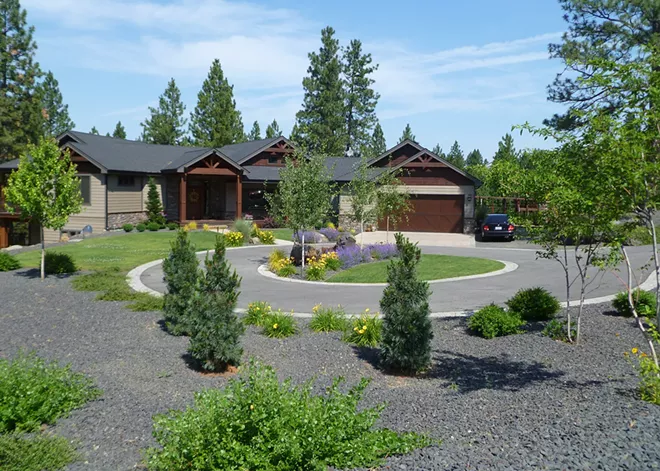
Lawn Cares
Kentucky bluegrass is considered a cool climate lawn that offers winter hardiness, while creating a luxurious and lush deep green lawn in the summer. Lawns aren't just for looks or play though. Lawns extending at least 30 feet around the perimeter of a building seem to provide substantial wildfire risk reduction. But bluegrass requires plenty of supplemental water. Rather than eliminating grassy lawns, choosing tall fescue or clover can be a good option. Both are slower-growing — meaning mowing can be less frequent — and they don't require as much fertilizer or irrigation as bluegrass.
Ultimately, that’s what we’re trying to do, is create a sense of place that people connect to that they make memories in.
Alternatively, some or all grass can be replaced by drought-tolerant and native plants to reduce irrigation needs. But Hanenburg says homeowners need to exercise caution.
"One of the things that concerns us, from an industry standpoint, is that we're moving toward more drought tolerance and less water, but the reality is that we have an urban forest around us already with these huge trees. They're providing us shade, they're providing mitigation — when we do get rainfall — with erosion. And now all of a sudden we're being asked to cut back on the water. And what's happening is a lot of our [urban] forest is dying."
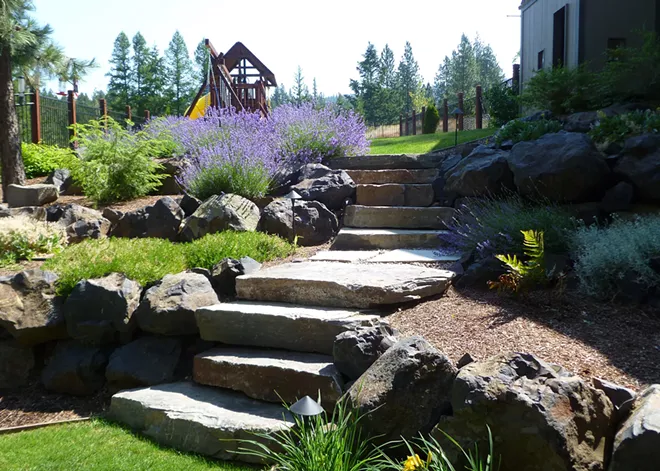
While Hanenburg has experience working with designs to suit all different levels of moisture, from storm swales to drought-tolerant and native plants, she emphasizes that newly planted native or drought-tolerant vegetation will still require water for three to five years.
"And then at that point, if it's well-established, you can go ahead and terminate water, however not entirely" she says. "There will be times where it's important to still provide a little bit of supplemental irrigation." She points to two recent plant die-offs: In the summer of 2021, the Inland Northwest experienced a heat wave that lasted several weeks, resulting in the loss of a lot of trees and vegetation. And during the pandemic, while office and public buildings were unoccupied, landscaping suffered from lack of water and care.
Although new drought-tolerant plants may eventually require little irrigation, Hanenburg stresses that long-established trees still need to receive supplemental water.

Rocks and Bark
Avoiding the issue of irrigation altogether by installing hardscape in the form of rocks or gravel may start to seem attractive, and it does offer some benefits: Hardscape can require less maintenance. But the tradeoff during hot summers can be extreme as these materials will absorb and then reflect back significant amounts of heat.
Lighter-colored rock is a better choice, but bark or wood chip mulches will absorb and reflect less heat, keeping the soil cooler.
As for weeds, no matter what material is chosen, "I'm just going to be straight up. You can put weed barrier down, and weed seeds will still germinate. You're not going to eliminate weeds," Hanenburg says.
Plant Picks
Choosing plants is where landscaping gets fun. First, of course, consider the microclimate to come up with a variety of suitable plants. But also think of other elements: Does the plant attract pollinators (and who doesn't love to watch butterflies in a spring garden?). Does the plant contribute a lovely fragrance? Is there a particular sentimental attachment to a plant that will add meaning to the garden? And don't forget to assess how the area will look in every season — including winter. Plants with berries are not only pretty but attract birds. Deciduous trees can offer shade in the summer and distinctive silhouettes in the winter. Trees with colorful or peeling bark offer interest year-round.
One of Hanenburg's favorite design elements — something she says can "make or break a landscape," — is lighting. When directed toward trees or outdoor art, "You can create shadows, you can cross light something or backlight something and really create drama."
And in the end, landscape ought to offer more than just weekend-warrior maintenance duties. Hanenburg, whose work has included designing memory gardens for people with dementia, knows firsthand that the opportunity to interact with and enjoy an outdoor space can have a profound impact.
"It reduces our heart rate. It reduces our cortisol levels. Our pain thresholds go up when we have access to nature. Even if it's just looking through a window, we're actually being immersed in the garden environment, and there's a physiological and psychological benefit," she says. "I personally would measure a successful landscape in terms of: Is it used? Is it loved?"... Ultimately, that's what we're trying to do, is create a sense of place that people connect to, that they make memories in."

